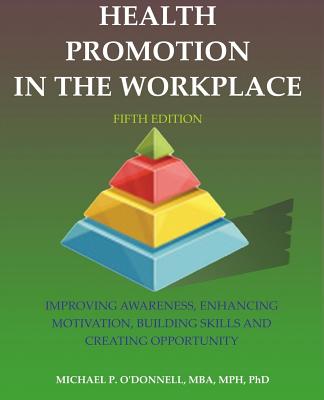
description
th edition, is a valuable reference for anyone who designs, manages, evaluates or studies workplace health promotion programs. Authored by a team of program managers and scholars who have designed and managed programs in several thousand settings, conducted hundreds of program evaluations, and published thousands of scientific studies on the most effective approaches, this 689 page book provides the rare combination of practical perspective combined with conservative scientific rigor. Earlier editions have been used by tens of thousands of professionals around the world. The overall book is organized around the Awareness, Motivation, Skills and Opportunity (AMSO) Framework, which was first articulated by Dr. Michael P. O'Donnell in 2005. The AMSO Framework has been adopted by hundreds of employers, and integrated into federal legislation that guides federal spending in this area. Health Promotion in the Workplace, 5th edition is written with three audiences in mind. The largest audience is the rapidly growing network of professionals who have embraced health promotion as a career. Our hope for them is to provide the insights and tools they need to be as effective as possible in their work, and in turn improve the health and quality of life for millions of people every day. Another key group is human resource professionals who have not chosen health promotion as a career, but have been tasked with implementing programs in their own organizations. Our hope for them is to provide a tangible sense of how programs should work, so they know how to hire the best people to help them and how to monitor and oversee the successful rollout, evaluation, and evolution of a program. The most important audience may be students, most of whom are young people with open minds and passion, people who are still formulating career plans. Our hope is that this book opens their minds to a career path through which they can help individuals experience an enhanced health and sense of wellbeing, transform workplaces into communities that care for their workers while they improve productivity and moderate medical cost increases, all of which will help organizations remain financially sustainable and commercially successful. This text is appropriate for students in undergraduate and graduate level programs. The 23 chapters of the book are organized into six major sections. The three chapters devoted to The Health Promotion Concept, include the health perspective, the business case and the AMSO Framework. The four chapters in on Management cover how to design, manage, evaluate, and market a program. The five chapters on Core Theories describe the behavior change theories most important for health promotion: goal setting, Transtheoretical Model, incentives, self efficacy, and tailoring. The eight chapters on Building Skills address health assessment, fitness, nutrition, stress management, weight control, tobacco control, decision support and EAP. The two chapters on Enhancing Opportunities discuss the impact of social relationships on organization culture. The final chapter is on special challenges in small business settings, the untapped frontier for workplace health promotion.
member goods
No member items were found under this heading.
notems store
Return Policy
All sales are final
Shipping
No special shipping considerations available.
Shipping fees determined at checkout.







